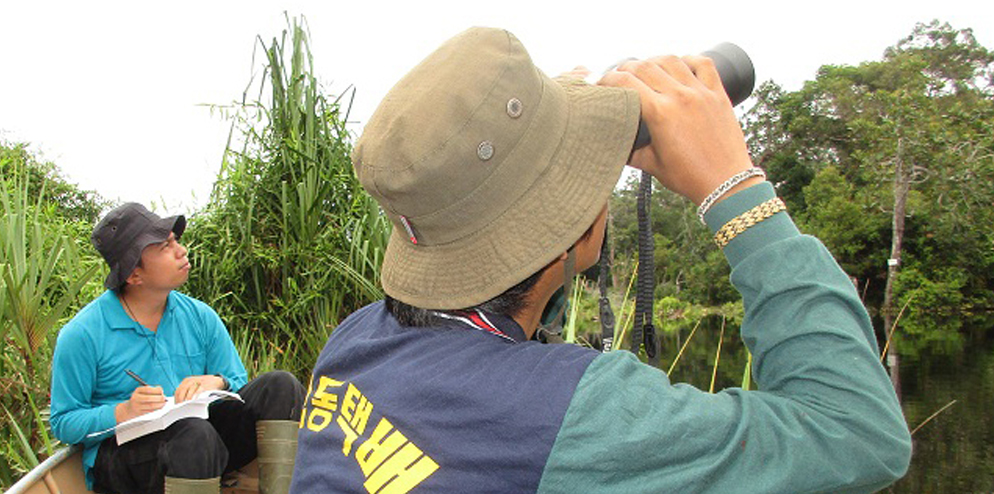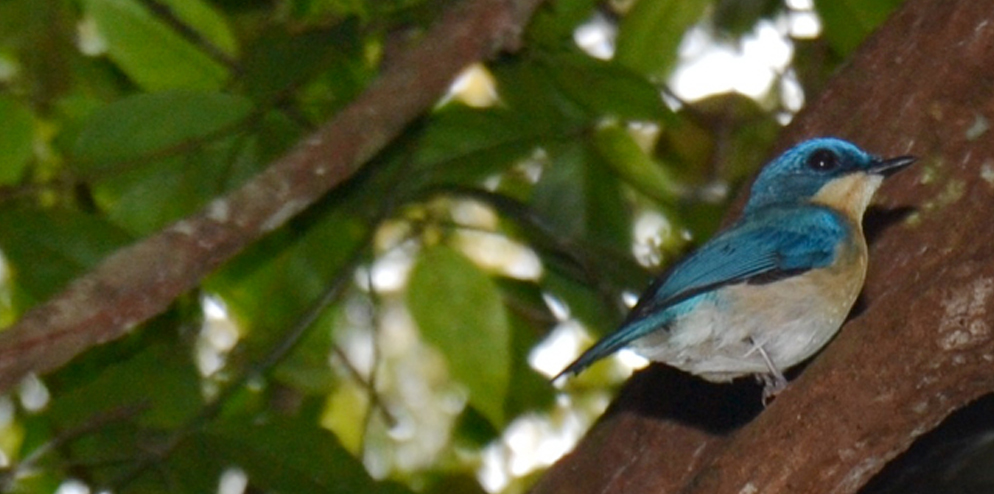September 20, 2016
As the sun started to rise that morning Muhammad Iqbal and three of his colleagues took a boat to sail Serkap River in Pelalawan regency, Riau province.
Sailing under the clear blue sky and hot sun, the goal for the four men that particular Wednesday was to observe and record the autumn migration of raptors along the East Asian Flyway as these birds of prey make their way from their summer home in Siberia, China and Mongolia to their wintering grounds in eastern Indonesia.

The Restorasi Ekosistem Riau (RER) team conduct the survey twice a year at spring and fall, to identify how the forest at the Kampar Peninsula is used by these migratory birds that includes: Oriental Honey-Buzzard, (Pernis ptilorhynchus), Black Baza (Aviceda leuphotes), Japanese Sparrowhawk (Accipter gularis), Chinese Goshawk (Accipiter solensis), Grey-faced Buzzard (Butastur indicus).
As the river widens into flood plain, Andi, the boat operator, stabilizes the boat for the team to began taking photographs.
At 9.30 a.m. they started to take pictures when the temperature began to rise leaving the cool Wednesday morning behind. “The rising heat creates thermal upwelling which is utilized by these birds to soar to a certain height then glide to an intended direction,” Iqbal said.
The first sighting occurred at 9:55 a.m. where four oriental honey buzzards were seen coming from the Southeast direction. Then in the next half an hour they were busy recording and capturing pictures of birds until 10:23 a.m. The raptors activity started to slowdown as the team after that particular time of the morning.
In total, they recorded 11 observations and 44 birds sighted that day. Oriental honey buzzards and black bazas shared 23 and 21 sightings consecutively. They called it a day at 15:30 p.m. because the air temperature became cooler and thermal air columns were no longer available as the sunshine was getting dimmer. “This time of day is not suitable for large body raptors to travel a long distance,” Iqbal said.
Bird watching is one of RER’s ongoing management activities to record wildlife presence inside the peat forest restoration area.

Established in 2013, RER is a collaborative project that brings together private and public sectors as well as civil society organizations to protect and restore ecologically important peat forest on Indonesia’s Kampar Peninsula. It is home to over 500 species of fauna and flora, including nearly 100 species of plants and animals listed as protected by the IUCN Red List of Threatened Species.
Here at RER’s 130,000 hectares of tropical peat forest are some of the world’s rare bird species such as White-winged Wood Duck, Milky Stork and Wallace’s Hawk Eagle that live safely with almost no human interference.
Observed in April, a blue-tailed Bee-eater was spotted within the restoration area. This bird is one of the 26 bee-eater species in the world and one of the three bee-eater species that can be found in Riau, Sumatra. Characterized by a strong black eye stripe, a vibrant orange throat and a combination of blue and green on its back, the blue-tailed bee eater’s feathers easily encompasses a vast spectrum of colors. Its pointed wings and a slightly curved down-turned bill support its primarily insectivorous diet.
To enable forest restoration to take place, there needs to be active protection on the ground in collaboration with all stakeholders in the landscape, working towards a common goal. The RER team is committed to this process.